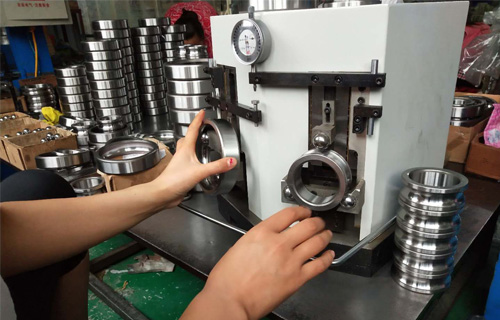
Nov . 19, 2024 00:02 Back to list
ceramic cylindrical roller bearings
Ceramic Cylindrical Roller Bearings An Overview
Ceramic cylindrical roller bearings are advanced components designed to offer enhanced performance in various applications. Made primarily from ceramic materials, these bearings have gained popularity in industries that require high precision, durability, and performance under extreme conditions.
Construction and Materials
The primary component of ceramic cylindrical roller bearings is the rolling elements, which are typically made from high-performance ceramic materials such as silicon nitride (Si3N4). These ceramics are chosen for their superior properties, including low density, self-lubricating characteristics, and resistance to wear and corrosion. Unlike traditional steel bearings, ceramic bearings can operate at higher temperatures, making them suitable for applications that involve elevated thermal stresses.
The inner and outer rings of the bearings are often constructed from hybrid materials that combine ceramic and stainless steel or other alloys. This hybrid design helps to reduce friction and weight while maintaining structural integrity. The cylindrical rollers facilitate smooth rotational movement, contributing to overall efficiency.
Advantages
1. Reduced Friction One of the primary benefits of ceramic cylindrical roller bearings is their reduced coefficient of friction compared to traditional steel bearings. This reduction leads to lower energy consumption, which is especially important in electric motors and high-speed machinery.
2. High Load Capacity Ceramic bearings can handle significant loads while maintaining their structural integrity. Their ability to withstand high forces makes them advantageous for heavy machinery and industrial applications.
3. Temperature Resistance Unlike their metallic counterparts, ceramic bearings can operate at higher temperatures without deforming or losing their mechanical properties. This resistance is vital for applications where heat generation is an issue.
ceramic cylindrical roller bearings

5. Longevity The wear resistance of ceramic material results in a longer lifespan for these bearings, reducing the frequency of replacements and maintenance costs over time.
Applications
Ceramic cylindrical roller bearings can be found in a wide array of applications across various industries. In the aerospace sector, they are used in jet engines and landing gear systems due to their lightweight and robust performance. The automotive industry also utilizes these bearings in high-performance engines and racing applications, where speed and reliability are paramount.
In the manufacturing sector, these bearings are integral to CNC machines and robotics, allowing for precise and efficient operations. Additionally, the medical industry uses ceramic bearings in equipment that requires extremely high levels of hygiene and reliability, such as surgical tools and devices.
Challenges and Considerations
While ceramic cylindrical roller bearings offer many advantages, they are not without challenges. One of the main issues is their brittleness. Although ceramics are strong under compression, they can be susceptible to cracking under excessive tensile stress. Therefore, proper installation and alignment are crucial to ensure optimal performance and longevity.
Another consideration is the initial cost. Ceramic bearings tend to be more expensive than traditional steel bearings due to the advanced materials and manufacturing processes involved. However, when considering their durability and reduced maintenance costs, they can provide a compelling return on investment over time.
Conclusion
Ceramic cylindrical roller bearings represent a significant advancement in bearing technology. Their unique properties make them ideal for high-performance applications where traditional materials may falter. As industries continue to push the boundaries of speed, efficiency, and durability, the adoption of ceramic bearings is likely to increase, marking a significant evolution in bearing design and application. With ongoing research and development, the future of ceramic cylindrical roller bearings looks promising, paving the way for enhanced performance in a wide range of sectors.
Latest news
-
Premium Deep Groove Ball Bearings | High Speed & Reliability
NewsAug.29,2025
-
Durable Scaffolding Clamps - Secure & Reliable Tube Connectors
NewsAug.28,2025
-
Common Failures in Thrust Ball Bearings and Solutions
NewsAug.22,2025
-
How Tapered Roller Bearings Can Take Shock Loads
NewsAug.22,2025
-
Angular Bearings in High-Precision Spindles
NewsAug.22,2025
-
The Impact of Misalignment on Cylindrical Roller Bearing Performance
NewsAug.22,2025
